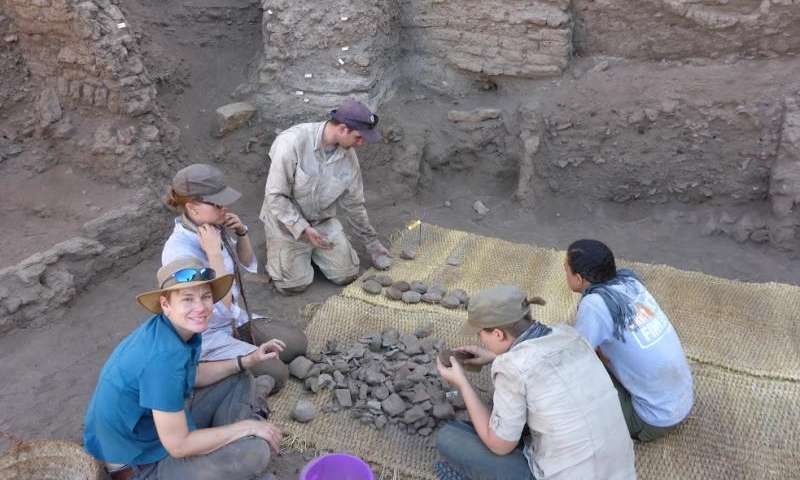Nine Moeller: The Archaeology of Urbanism in Ancient Egypt: From the Predynastic Period to the End of the Middle Kingdom.
En el presente volumen Moeller, de la Universidad de Chicago, escribe sobre sus descubrimientos y revisa el trabajo de otros arqueólogos. La publicación consiste en un estudio exhaustivo de la aparición de la civilización urbana, desarrollando distintos aspectos diferentes facetas de urbanismo en el antiguo Egipto, basándose en algunas pruebas habidas en las excavaciones recientes, así como en una gran cantidad de datos arqueológicos
Este libro explora los cambiantes patrones de asentamiento mediante el contraste de los períodos de fuerte control político y en contra de los de la descentralización.
También se analizan los hogares y el diseño de la arquitectura doméstica, que son elementos clave para la comprensión de cómo funcionaba la sociedad y de cómo evolucionó con el tiempo.
índice:
List of figures
Preface
Introduction
1 Ancient Urbanism and the Case of Egypt
1.1 General considerations relating to urbanism in early civilizations
1.2 The case of ancient Egypt
1.3 Categories of ancient Egyptian settlements
2 Current and Past Studies of Egyptian Settlements
2.1 Historical overview of settlement archaeology in Egypt
2.2 The role of Egyptian settlements in interdisciplinary studies on ancient urbanism
3 The Environmental Setting
3.1 Introduction
3.2 Environmental settings for ancient settlements in Egypt
3.3 Settlement archaeology in Egypt: Problems and priorities
4 The Origins of Urban Society
4.1 Introduction
4.2 The first appearance of urban elements
4.3 The case of Hierakonpolis
4.4 Evidence for an Early Dynastic building complex at Buto
4.5 The Early Dynastic settlement remains at Elephantine
4.6 General conclusions concerning the emergence of urban features in Predynastic and Early Dynastic settlements
5 The Settlements of the Old Kingdom
5.1 Introduction
5.2 Settlements related to royal mortuary cults in the Memphite región
5.3 Discussion of Memphis versus a “capital zone”: The evidence for a “shifting capital” during the Old Kingdom
5.4 Evidence for Old Kingdom settlements in the Delta and the Nile Valley
5.5 Old Kingdom settlements in the marginal regions of Egypt
5.6 Concluding remarks
6 The Layout of Old Kingdom Houses
6.1 Introduction
6.2 Evidence from Giza
6.3 Houses at Elephantine
6.4 The layout of the residential part of the governor’s palace at Ayn Asil in the Dakhla Oasis
6.5 The layout of Building C at Ayn el-Gazzareen
6.6 Concluding remarks
7 The Development of Towns during the End of the Old Kingdom and the First Intermediate Period (ca. 2200–2050 BCE)
7.1 Introduction
7.2 The Memphite region: A widespread abandonment of settlement sites linked to royal mortuary cults
7.3 Middle Egypt: The evidence for settlements dating to the late Sixth Dynasty and First Intermediate Period
7.4 Evidence for settlement development in Upper Egypt
7.5 Evidence for First Intermediate Period activity at Ayn Asil/Balat in the Dakhla Oasis
7.6 Concluding remarks
8 The Middle Kingdom: Town Planning and Internal Colonization at Its Height
8.1 Introduction
8.2 State-planned settlements
8.3 Karnak: Evidence for a Middle Kingdom city
8.4 The town of Elephantine during the Middle Kingdom
8.5 Tell Edfu: The town of the Middle Kingdom
8.6 Tell el-Dab’a: The evolution of a major urban center in the eastern Delta región
8.7 Concluding remarks
Further discussions and archaeological details relating to Chapter 8
8.I The function of sinusoidal mud-brick walls dating to the Middle Kingdom
8.II The purpose of the settlements at Qasr el-Sagha and the function of the stone-revetted mounds
8.III Further archaeological details discovered at the settlement of Lahun
8.IV Further archaeological details noted at the settlement of Wah-Sut at South Abydos
8.V Further archaeological details of the Middle Kingdom settlement at Elephantine
9 House Layouts in the Middle Kingdom
9.1 Introduction
9.2 Houses in the residential quarters of Tell el-Dab’a
9.3 Tell Basta: A palatial complex of the Middle Kingdom
9.4 Settlement remains at Lisht-North
9.5 Lahun: The layout of the large mansions
9.6 Wah-Sut: The governor’s residence (Building A)
9.7 The layout of domestic buildings at Elephantine
9.8 Concluding remarks
10 Final Conclusions
10.1 The role of town planning
10.2 Urbanism in ancient Egypt
10.3 An outlook into cross-cultural comparisons: The case of urban society in Mesopotamia
Notes 385
Index 421
Ampliar información y compra del libro: http://www.cambridge.org/je/academic/subjects/archaeology/egyptology/archaeology-urbanism-ancient-egypt-predynastic-period-end-middle-kingdom
Reseña: http://phys.org/news/2016-06-chronicles-urban-ancient-egypt.html

